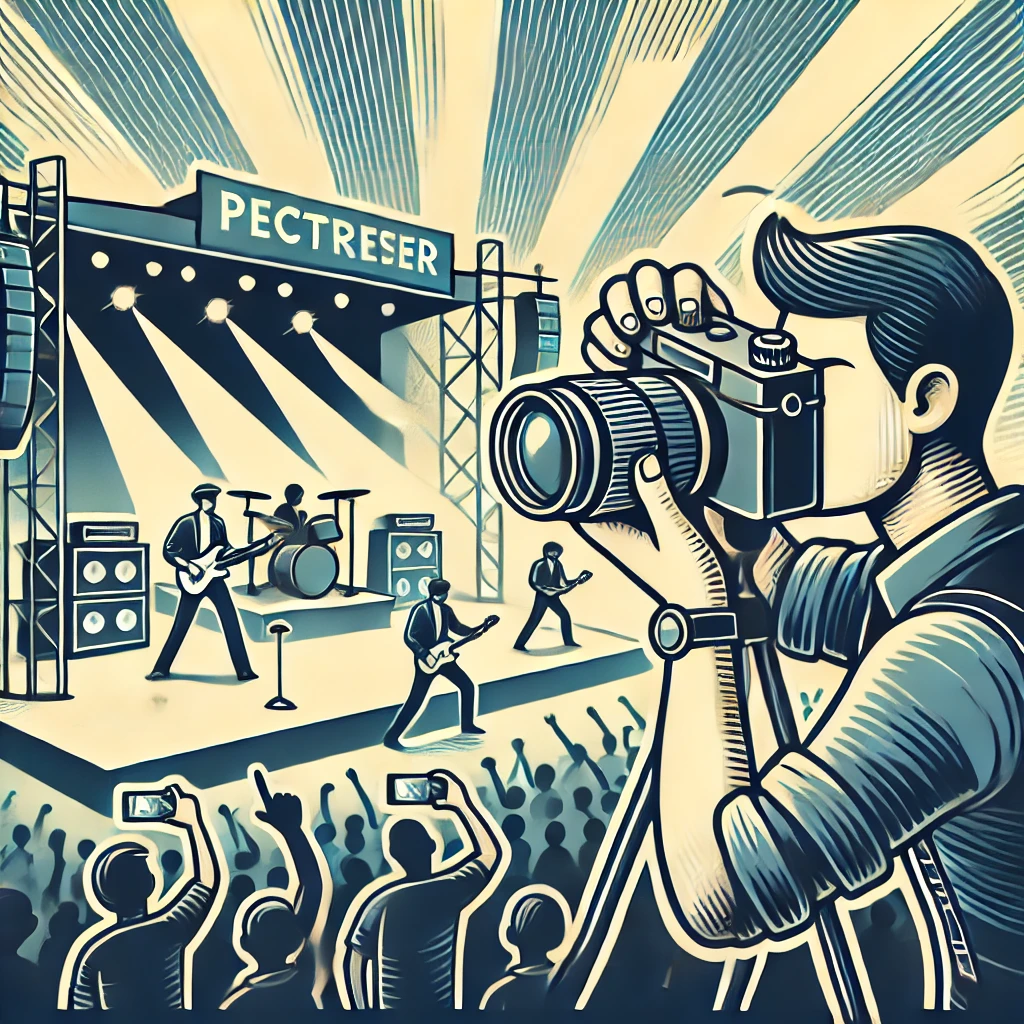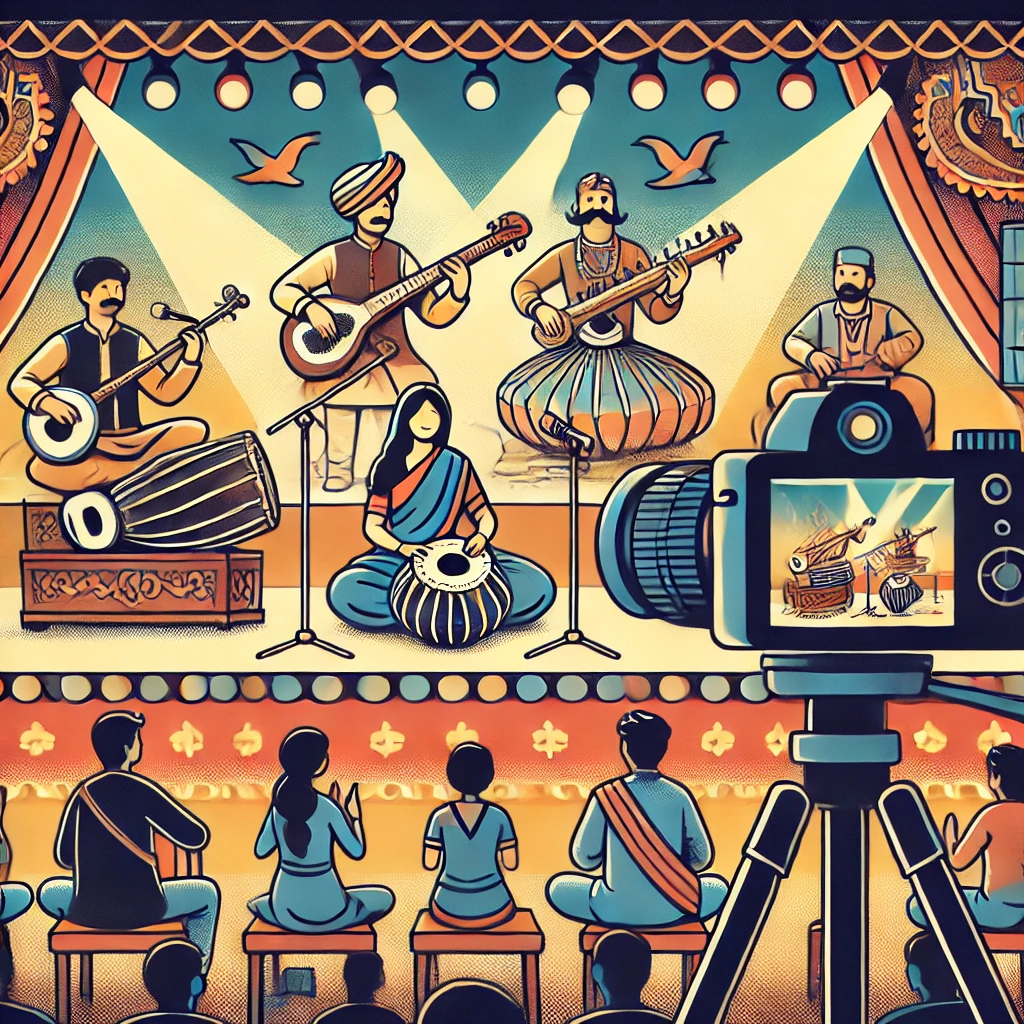
Table of Contents
Introduction: Master the Art of Concert Photography
Concert photography is an exhilarating yet challenging field. The energy, the lights, the music – capturing these elements perfectly requires skill and practice. In this article, we’ll reveal four essential tips that will help you take better concert photos, transforming your shots into captivating visual stories. Whether you’re a seasoned professional or just starting, these strategies can elevate your concert photography game. Let’s dive in
Additional Mentions in Content
- Low-Light Mastery: Among the top is mastering low-light settings. Concerts often have challenging lighting, so adjusting your ISO, shutter speed, and aperture is key to capturing clear shots.
- Capturing Emotion: A crucial is to capture the emotion of both performers and the audience. Focusing on expressive faces and powerful gestures will bring the concert’s spirit to life.
- Using Burst Mode: Another effective is to use burst mode for fast-paced moments. This helps you capture the best action in a series of shots.
- Experimenting with Angles: One of the most impactful is to play with angles. Shooting from different perspectives adds depth and makes your images stand out.
1. Utilize Fast Shutter Speed for Crisp Images
One of the primary hurdles in concert photography is capturing clear images in a dynamic setting. Fast shutter speed is your best friend here.
Why Fast Shutter Speed Matters
A fast shutter speed (e.g., 1/250s or faster) freezes motion, allowing you to capture crisp, clear images even in low-light conditions typical of concerts. This setting minimizes motion blur, especially when photographing fast-moving performers.
How to Set Fast Shutter Speed
While setting up your camera, switch to Shutter Priority mode (Tv/S). This mode lets you choose the desired shutter speed while the camera automatically adjusts the aperture. Use a low f-stop number (such as f/2.8) to allow more light into the lens.
Pro Tip
Shooting in continuous mode can increase your chances of capturing the perfect moment. Experiment with different shutter speeds to find the sweet spot for each concert environment.
2. Master Low Light Settings
Concerts often feature unpredictable lighting. Learn to navigate low-light conditions to ensure your photos stand out.
ISO Settings for Low Light
ISO determines your camera sensor’s sensitivity to light. In low-light settings, increase your ISO to 1600 or 3200. However, be cautious of noise – unwanted graininess in your images.
Aperture Control
Using a lens with a wide aperture (low f-stop number like f/1.8 or f/2.8) allows more light to hit the sensor, essential in low-light environments. Lenses like the Xora Prime 35mm are excellent for this purpose, offering a perfect balance of wide aperture and sharpness.
White Balance Adjustment
Concert lighting varies dramatically. Manually adjusting white balance, or using presets like ‘Incandescent’ or ‘Tungsten,’ can help keep colors accurate. The Xora X-Pro Mirrorless camera features customizable white balance settings that adapt quickly to changing concert lights.
3. Perfect Your Positioning
Your position at a concert greatly affects your shots. Here’s how to find the best vantage points.
Scouting the Venue
Arrive early and scout the venue. Identify the stage layout, light sources, and possible obstacles. If allowed, experiment with different spots during the soundcheck.
Close but Not Too Close
Being close to the stage can offer intimate shots, but avoid being too close as it can limit your angle options. Mid-range lenses such as the Xora 24-70mm f/2.8 are ideal for flexibility in framing from a moderate distance.
Consider the Crowd
Include audience reactions for storytelling. They add depth and context to your images. Capture moments where the crowd interacts with the performers for a more dynamic shot.
4. Anticipate the Action
Great concert photos often come from anticipating key moments. Here’s how to stay one step ahead.
Know the Music
If you follow the band or performer, you’re likely familiar with their setlist and performance style. Use this knowledge to anticipate climactic points in songs where dynamic movements or special effects are likely.
Continuous Shooting Mode
Activate continuous shooting to capture multiple frames per second. This increases your chance of snapping the perfect moment. The Xora X-Pro Mirrorless offers up to 20 frames per second, ensuring you won’t miss any crucial action.
Be Patient
Concert photography requires patience. Wait for the right moments when the performers are most animated or the lights are perfectly aligned. Sometimes, the best shots come from waiting for the split-second where everything falls into place.
Additional Tips for Enhancing Concert Photography
Use Manual Focus
Autofocus might struggle in low light. Switching to manual focus gives you more control, ensuring your subjects remain sharp in unpredictable lighting.
Editing Your Photos
Post-processing is crucial. Use software like Adobe Lightroom to adjust exposure, contrast, and color balance. Fine-tuning your photos can turn a good shot into a great one.
Back Up Your Photos
Always back up your work. Cloud services and external hard drives are essential to avoid losing your images.
Additionally, concert photography in India is its own beast.
The Ultimate Guide to Concert Photography in India

Concert photography is an exhilarating and challenging genre that combines the excitement of live music with the art of capturing fleeting moments. India, with its vibrant music scene and diverse array of concerts, provides a unique backdrop for photographers looking to hone their skills. From Bollywood performances and classical music festivals to rock concerts and indie gigs, there’s always something happening. This guide will provide you with essential tips and techniques to excel at concert photography in India.
1. Research the Venue and Artists
Before heading to a concert, it’s crucial to do some research:
- Venue Layout: Understand the layout of the venue to plan your shooting positions. Knowing the location of the stage, lighting setups, and possible obstructions can help you choose the best spots.
- Artists and Performances: Familiarize yourself with the artists and their performance styles. Knowing when the key moments might happen, such as solos or special effects, allows you to be ready to capture them.
2. Gear Up with the Right Equipment
Having the right gear can make a significant difference in concert photography. Here’s what you need:
- Camera Body: A camera with excellent low-light performance is essential for concerts. Full-frame DSLRs or mirrorless cameras are ideal.
- Lenses: Fast lenses with wide apertures (f/2.8 or lower) are crucial. Prime lenses like 50mm f/1.8 or 85mm f/1.4 and zoom lenses like 24-70mm f/2.8 or 70-200mm f/2.8 are popular choices.
- Extra Batteries and Memory Cards: Concerts can be long, and you’ll be shooting a lot, so make sure you have spares.
3. Master Your Camera Settings
Concerts often involve low light and fast-moving subjects, making it challenging to get sharp, well-exposed images. Here are some tips:
- ISO: Increase your ISO to ensure your shutter speed is fast enough to freeze motion. Modern cameras handle high ISO levels quite well, so don’t be afraid to push it.
- Aperture: Use a wide aperture to let in as much light as possible. This also helps in creating a shallow depth of field, isolating the subject from the background.
- Shutter Speed: Aim for a shutter speed of at least 1/250th of a second to freeze action. Adjust based on the movement and lighting conditions.
- Shooting Mode: Use manual mode to have full control over your settings, or aperture priority mode if you need to quickly adapt to changing lighting conditions.
Here is a great article for beginners learning about concert photography.
4. Focus on Composition
Composition can make or break a photo. Here are some tips for better composition in concert photography:
- Rule of Thirds: Use the rule of thirds to place your subject off-center, creating a more dynamic image.
- Leading Lines: Use elements like stage lights, instruments, or the performer’s body to lead the viewer’s eye into the frame.
- Close-Ups and Wide Shots: Mix close-up shots of the performers with wide shots of the stage and crowd to tell a complete story.
5. Capture the Energy and Emotion
Concerts are about energy and emotion. Your photos should reflect that:
- Expressions and Gestures: Focus on the performers’ facial expressions and body language. These moments convey the passion and energy of the performance.
- Crowd Reactions: Capture the audience’s reactions and interactions. Shots of the crowd can add context and convey the atmosphere of the concert.
- Special Effects: Take advantage of special effects like lighting changes, smoke, and confetti. These elements can add drama and excitement to your photos.
6. Respect the Venue and Performers
Always respect the rules of the venue and the performers. Here are some guidelines:
- Follow Venue Rules: Some venues have restrictions on flash photography or certain types of cameras. Always adhere to these rules.
- Be Discreet: Try not to obstruct the view of other concert-goers or distract the performers. Use a telephoto lens to capture close-ups without getting too close to the stage.
- Get Permission: If you plan to publish your photos, ensure you have the necessary permissions from the venue and the artists.
7. Post-Processing
Post-processing is an essential part of concert photography. Here are some tips:
- Noise Reduction: Use software like Adobe Lightroom or Photoshop to reduce noise, especially in high ISO images.
- Adjust Exposure: Fine-tune the exposure, highlights, and shadows to bring out the best in your photos.
- Enhance Colors: Concert lighting can produce vibrant colors. Enhance these colors to reflect the mood of the performance.
Conclusion: Ready to Elevate Your Concert Photography?
Improving your concert photography skills boils down to preparation, understanding your gear, and practicing anticipation. By applying these four tips—utilizing fast shutter speeds, mastering low light settings, perfecting your positioning, and anticipating the action—you’ll transform your concert shots into stunning visual narratives.
Ready to elevate your concert photography? Visit Xora for more tips, tutorials, and resources to help you become a better photographer. Happy shooting!
Happy shooting, and may your next concert photos be your best yet!

Leave a Reply